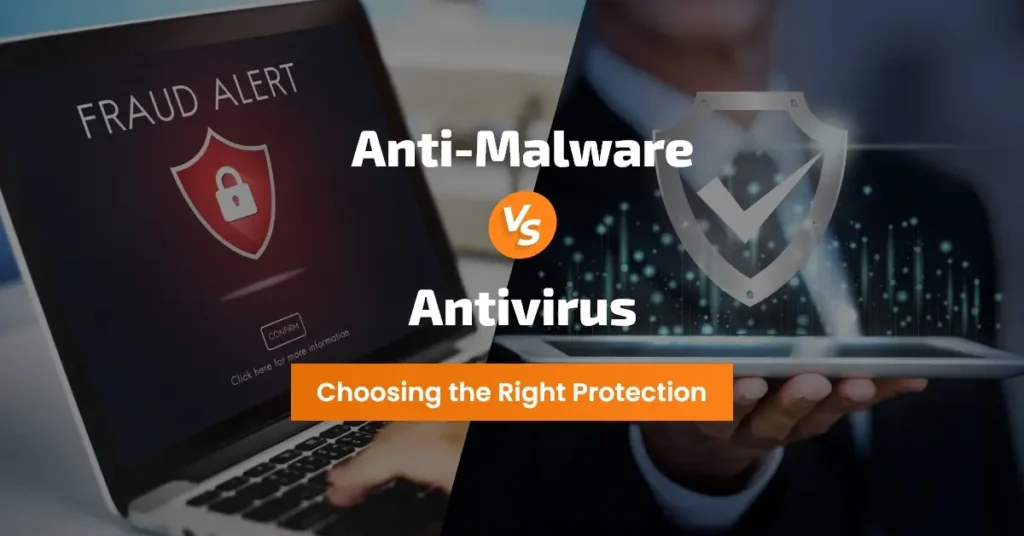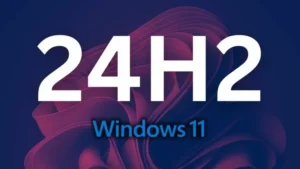As we sail through this vast ocean of digitization, it is bringing in a lot of advantages. But we are all aware that it’s not all glitz and glamor, right? That’s because digitization has its very own risks, too. And the majority of these risks arise from viruses and malware. Hence, to safeguard your computer systems, cybersecurity comes to the rescue. Also, not to forget that to ensure safe practices, cybersecurity is essential. But now the question arises: what does this cyber security term mean? Well, cybersecurity, in simple words, is like a shield in the digital world around us. This shield protects our computers and data. In addition, protection is given to even networks from digital attacks. It basically prevents hacking and data breaches.
Having mentioned that, we can understand that cybersecurity is paramount for businesses as well as individuals. And thus, for this protection, the right software is what is required now. With the constant threat of malware and virus attacks, a plethora of antivirus and antimalware software is available on the market. Hence, choosing the right one is crucial. But what’s the difference between antivirus and anti-malware software? Well, this article deals with just this question. We will cut through the confusion and explain how they differ.
Understanding Malware vs. Viruses
But before we dive deeper into anti-malware vs. antivirus, we need to understand their meaning. It is essential to know: What do these protect the computer system from? As the name suggests, these programs work against malware and viruses, respectively. So now the new query asks what the distinction is between malware and viruses. Well, we can say that both of these are interrelated. Let’s see how.
So, a virus is nothing but a block of code that replicates itself in the computer system. This replicated code is then inserted into the system, causing damage. It can also be defined as a specific type of malware. Hence, by replicating itself, it spreads all across a system.
However, malware is not just a specific code; it is rather a broader term. It primarily covers all the various malicious software programs. Thus, the term malware is used. And these programs include Trojans and spyware. In addition, there are adware and ransomware included here, along with viruses.
Thus, the logic here would be that all viruses are malware, but not all malware are viruses.
Now that you are well equipped with knowledge of viruses and software, you are all set to understand these antivirus and antimalware software. So, let’s get insights about these protectors and their key characteristics.
Anti-Malware Software: Safeguarding Against Newer Threats
Malware covers all the threats to a computer system. Be it viruses (malicious codes), adware, or trojans, it encompasses everything. As technology advances, newer and more dangerous threats are present. These threats need to be tackled and safeguarded. Hence, the need for anti-malware software arises.
Since the talk about threats to computer systems has arisen, only antivirus software has been given attention. The reason was simply that viruses were the threats then and still are. So why are anti-malware programs required? As already mentioned, newer threats are arising, and thus anti-malware software goes beyond traditional antivirus protection. Its prime focus is on newer and more sophisticated malware threats. And it overcomes such threats along with viruses, as these might evade antivirus detection. Let’s see the various techniques it employs:
- Signature-based detection: This type of detection of malware is similar to that of antivirus software. The anti-malware software here has a database of already-known malware in the form of their digital fingerprints. These digital fingerprints are the unique identifiers for malware software or threats. Then, using these signatures, it identifies malware.
- Behavior-based detection: This is a different approach that identifies unknown or new threats or malware. It is so as This detection goes beyond just looking at the file itself. It analyzes the background of the program on your system. It monitors and checks if the program is involved in any suspicious activities, like accessing unauthorized areas, replicating itself, etc. If suspicious behavior is found and does not match the signatures, then it is flagged as malware. Hence, new and evolving threats are identified.
- Sandboxing: This approach is like making malicious programs quarantined. It basically creates an isolated environment within the system. The suspected malicious programs are then rumored in this area or sandbox. Thus, if the execution is anything harmful within the controlled environment, the malware is removed.
Key Characteristics of Anti-Malware Software
Let’s have a look at the characteristics of such software so that it becomes easier to have a separate account of anti-malware vs. antivirus later.
- Sandboxing: Isolates all suspicious files for safe testing separately.
- Traffic filtering blocks access to malicious websites and servers on the internet.
- Proactive security: scans for and removes various malware threats, like spyware and adware.
Antivirus Software: Protection Against Established Threats
Viruses—this term is a nightmare in all aspects. Whether mentioned in the medical world or the technical computer world, it creates havoc when systems are infected with it. Because we are all surrounded by computer systems, antivirus software serves as our primary defense against malicious code.
These programs act as a shield against known viruses. Along with the known ones, these shield against other established malware threats too. But how does it do that? So, It basically scans your device and looks for malicious software or code. You can say that it looks for infected areas. The scan is done in order to look for patterns (signatures) that match the known threats. Once a match is found, the antivirus program quarantines or removes the malicious software or code. Thus, removing the cause from the root and preventing further infestation in the system. In addition to this, antivirus software monitors program behavior too. By analyzing the program behavior, it then flags any suspicious activity.
Key Characteristics of Antivirus Software
Let’s now have a comprehensive look at the characteristics possessed by antivirus software to have a better anti-malware vs. antivirus comparison later.
- Real-time scanning: The best use of such software derives from continuous scans. These programs make your computer system scan in real-time for threats. The system scan is done regularly. And by scanning, it makes the system aware of what needs to be done and where. Thus preparing it to overcome all the malicious viruses and threats encountered during the scanning. This ensures that your system is well prepared all the time and reduces the risks.
- Automatic updates: Now, after scanning, if malware or virus is found, the system is updated. Automatically, the system is updated in order to take relevant action against it. Also, the latest virus definitions are downloaded. These definitions are essential to identifying any new or unknown virus or threat. These will combat the emerging, suspicious ones too. Thus, regular updates are also maintained by antivirus software.
- Threat removal: Once the infested area is found and the system is updated, these threats and viruses are removed. It all happens before the virus can create irreparable havoc within the computer system. Thus, your device and data are now safeguarded against potential harm.
Read Also: Top 10 Free Anti-Malware Software of 2024: Best Picks & Reviews
Anti Malware vs. Antivirus: The faceoff
As we know about antivirus and anti-malware software, it’s time for their final face-off. So here is a comparative table:
| Feature | Antivirus Software | Anti-Malware Software |
| Targets | Known viruses, Trojans and worms | Newer and more sophisticated malware (spyware, adware, ransomware, zero-day threats) |
| Detection Method | Primarily signature-based | Signature-based, behavior-based, and sandboxing |
| Focus | Established and known threats | Evolving and new threats |
| Updates | Regularly updates for new virus definitions | More frequent updates due to rapidly changing threats |
| Real-time Scanning | Yes | Yes |
| Threat Removal | Yes | Yes |
| Additional Features | may include firewall protection | may include traffic filtering |
| Used With | Good for basic protection | Ideal for comprehensive security |
The Final Verdict: Do You Need Both?
Now that you know all about antivirus and anti-malware software, along with their comparison as anti-malware vs. antivirus, a final verdict is in order. It is now clear that both anti-malware and antivirus software aim to protect your device from threats and overcome potential damage. But the catch is that they have distinct approaches. Therefore, you should ideally have comprehensive and complete security against all sorts of computer system threats.
Are you still looking for justification? Well, here’s why:
- Layered Security: Antivirus and anti-malware complement each other. thus offering a layered defense against various kinds of threats.
- Staying Ahead of the Curve: Anti-malware software helps catch new and evolving threats. These threats might bypass traditional antivirus protection. So get anti-malware software to fight these havoc creators.
Although there is a defense layer created using this software, remember that it can never be the ultimate solution. Keep in mind that, even with both anti-malware and antivirus software, complete security is never guaranteed at all. You need to be extra cautious on your side as well and not rely on such software completely. So, always practice safe browsing habits. And stay updated on the latest cybersecurity threats.







